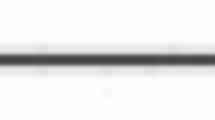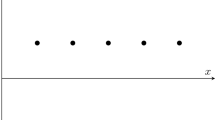Abstract
Philosophical works on actual causation make wide use of thought experiments. The principal aim of this paper is to show how thought experiments are used in the contemporary debate over actual causation and to discuss their role in relation to formal approaches in terms of causal models. I claim that a recourse to thought experiments is not something old fashioned or superseded by abstract models, but it is useful to interpret abstract models themselves and to use our intuitions to judge the results of the model. Recent research on actual causation has stressed the importance of integrating formal models with some notion of normality; I suggest that thought experiments can be useful in eliciting intuitions where normality is not intended in a statistical sense. The first expository part (1–3) gives a short presentation of the notion of actual causation, summarising some typical problems of counterfactual approaches and how they are treated in causal and structural models. The second part (4–7) focuses on the problems of model isomorphism and criticises some radical ideas opposing the role of thought experiments, claiming that they may also be of use in evaluating formal models.

Similar content being viewed by others
Notes
Halpern and Pearl (2001/2005) call these kinds of situations ‘disjunctive scenarios’, in contrast with ‘conjunctive scenarios’, where both factors are necessary to bring about the effect.
Although there is causal dependence on their union.
Thanks to an anonymous referee for pointing this out.
But see Reiss (2003) on the complementary and auxiliary role of thought experiments with respect to mathematical models.
The link between actual causation and deviation from normality belongs to the philosophical tradition starting at least with Hart and Honoré (1959). Menzies (2004, 2007) proposes a further integration with Lewis semantics for counterfactuals based on similarity relations between possible worlds. On the other hand, the literature on artificial intelligence offers interesting works, like Kraus et al. (1990) and Pearl (1990), tackling the problem of providing a satisfactory metric for measuring degrees of normality and ordering worlds.
This definition has recently undergone various changes and technical complications, but we think that this version is sufficient to give a flavour of the on-going research.
On contextual dependence about causality, see also Benzi (2007).
References
Baumgarten M, Glynn L (2013) Introduction to special issue on ‘actual causation’. Erkenntmis 78:1–8
Benzi M (2007) Contexts for causal models. In: Russo F, Williamson J (eds) Causality and probability in the sciences. College Publications, London, pp 467–486
Benzi M (2011) Medical diagnosis and actual causation. L&PS–Logic Philos Sci 9(1):365–372
Byrne RMJ (2005) The rational imagination. How people create alternative to reality. The MIT Press, Cambridge
Collins J, Hall N, Paul L (eds) (2004) Causation and counterfactuals. The MIT Press, Cambridge
Glymour C, Wimberly F (2007) Actual causation and thought experiments. In: Campbell JK, O’Rourke M, Silverstein H (eds) Causation and explanation. The MIT Press, Cambridge, pp 43–68
Glymour C, Danks D, Glymour B, Eberhardt F, Ramsey J, Scheines R, Spirtes P, Teng CM, Zhang J (2010) Actual causation: a stone soup essay. Synthese 175:169–192
Hall N (2007) Structural equations and causation. Philos Stud 132:109–136
Halpern JY (2008) Default and normality in causal structures. In: Principles of knowledge representation and reasoning: Proceedings. Eleventh International Conference (KR’08), pp 198–208
Halpern JY (2016) Appropriate causal models and the stability of causation. Rev Symb Logic 9(01):76–102
Halpern JY, Hitchcock C (2011) Actual causation and the art of modelling. In: Dechter R, Geffner H, Halpern J (eds) Heuristics, probability, and causality. College Publications, London, pp 383–406
Halpern JY, Pearl J (2001/2005) Causes and explanations: a structural-model approach - Part I: causes. In: Proceedings of the seventeenth conference on uncertainty in artificial intelligence (UAI2001). Morgan Kaufmann, San Francisco, pp 194–202 [New expanded 2005 version in Br J Philos Sci 56:843–887]
Hart HLA, Honoré AM (1959) Causation in the law. Clarendon Press, Oxford
Hiddleston E (2005) Causal powers. Br J Philos Sci 56:27–59
Hitchcock C (2001) The intransitivity of causation revealed in equations and graphs. J Philos 98:273–299
Hitchcock C (2007) Prevention, preemption, and the principle of sufficient reason. Philos Rev 116:495–532
Hitchcock C (2009) Causal modelling. In: Beebee H, Hitchcock C, Menzies P (eds) Oxford handbook of causation. Oxford University Press, Oxford, pp 299–314
Hitchcock C, Knobe J (2009) Cause and norm. J Philos 106(11):587–612
Huber F (2013) Structural equations and beyond. Rev Symb Logic 6(04):709–732
Hull DL (1989) A function for actual examples in philosophy of science. In: Ruse M (ed) What the philosophy of biology is: essays dedicated to David Hull. Kluwer Academic Publishers, Dordrecht, pp 309–321
Kahneman D, Miller DT (1986) Norm theory: comparing reality to its alternatives. Psychol Rev 93(2):136
Kraus S, Lehmann D, Magidor M (1990) Nonmonotonic reasoning, preferential models and cumulative logics. Artif Intell 44(1):167–207
Lewis D (1973) Causation. J Philos 70:556–567
Livengood J (2013) Actual causation and simple voting scenarios. Nous 47(2):316–345
Menzies P (2004) Difference making in context. In: Collins J, Hall N, Paul L (eds) Causation and counterfactuals. The MIT Press, Cambridge, pp 139–180
Menzies P (2007) Causation in context. In: Price H, Corry R (eds) Causation, physics, and the constitution of reality: Russell’s Republic Revisited. Oxford University Press, Oxford, pp 191–223
Menzies P (2014) Counterfactual theories of causation. In: Zalta E (ed) The stanford encyclopedia of philosophy (Spring 2014 Edition). URL: http://plato.stanford.edu/archives/spr2014/entries/causation-counterfactual/
Pearl J (1990) Probabilistic semantics for nonmonotonic reasoning: a survey. In: Shafer G, Pearl J (eds) Readings in uncertain reasoning. Morgan Kaufmann, San Francisco, pp 699–710
Pearl J (2000) Causality: models, reasoning and inference, 2nd edn. The MIT Press, Cambridge
Reiss J (2003) Causal inference in the abstract or seven myths about thought experiments. In: Causality: metaphysics and methods research project. Technical Report 03/03. LSE
Reiss, J. (2013) Contextualising causation Part I. Philosophy Compass, 8(11): pp. 1066–1075. Part II, pp. 1076–1090
Solomon M (2008) Epistemological reflections on the art of medicine and narrative medicine. Perspect Biol Med 51(3):406–417
Spirtes P, Glymour C, Scheines R (1993) Causation, prediction, and search, 2nd edn. Springer, New York
Woodward J (2003) Making things happen: a theory of causal explanation. Oxford University Press, Oxford
Author information
Authors and Affiliations
Corresponding author
Additional information
A short version of this paper has been presented at SIFA Conference in Padua 2010. I wish to thank people who commented then. Warm thanks to Donald A. Gillies for discussing a previous version of the paper at UCL, London. Many thanks also to the editors and to the two anonymous referees for their very detailed comments on the last version of the paper.
Rights and permissions
About this article
Cite this article
Benzi, M. Thought Experiments and Actual Causation. Topoi 38, 835–843 (2019). https://doi.org/10.1007/s11245-016-9427-7
Published:
Issue Date:
DOI: https://doi.org/10.1007/s11245-016-9427-7




